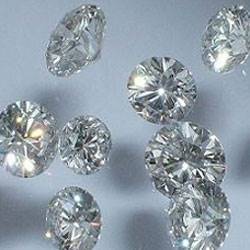|
News
Articles from GEMSTONES - SYNTHETIC (54 Articles), (DISCONTINUED) GEMSTONES - SYNTHETIC STONES (18 Articles)

Synthetic diamonds
Lab-grown diamonds to take off?
 3.0 k views | Posted November 30, 2010 3.0 k views | Posted November 30, 2010 | By Lorna Goodyer
A diamond manufacturer has revealed that it has been mass-producing colourless, synthetic diamonds and is gearing up to sell them online.
Gemesis, which specialises in lab-grown diamonds, has until now focused mostly on fancy-coloured stones.
Colourless diamonds are more expensive to cultivate than fancy-coloured stones, but Gemesis is now using the chemical vapour deposition (CVD) method to produce thousands of carats a month from a manufacturing base in Southeast Asia.
Chief executive and president Stephen Lux told US trade magazine JCK that the “created” gems are mostly more than 0.5 carat, H-colour, and VS clarity.
“This is a momentous thing,” Lux said. “We can provide to the consumer a colourless diamond that is identical in every way to a mined stone except for its origin.”
However, using the CVD production method means that the created diamonds will need to be treated with high temperatures and high pressure (HTHP) to make them white.
Gemesis intends to sell its “created” colourless stones to American and Canadian consumers via a new e-commerce website. However, Lux said the company will consider industry alliances that “make sense”.
With prices lower than natural diamonds, it remains to be seen how consumers will react to the cheaper, treated, stones. “They will be good value compared to the mined [diamonds], but not a giveaway price,” Lux said.
The Gemmological Association of Australia's Kathryn Wyatt said the relatively high price that Gemesis was expecting to charge meant these mass-produced, created diamonds were unlikely to flood the market.
However, she said, “People in the trade will need to up their skills to be able to identify just another one of a long line of synthetic and treated stones. This development has always been on the cards. The manufacturers have just been waiting for it to become commercially viable.”
Wyatt added that Gemesis’s mass-production plans could increase the chances of synthetic, colourless diamonds being passed off as natural stones at some point down the line.
“White diamonds are the most commonly traded gemstone and therefore [there will be] a lot more chance for a synthetic to be passed off as a natural diamond. It is most likely that gemmologists and grading laboratories such as GAA-accredited GSL (Gems Studies Laboratory) will have lots more work for them in grading gem-set jewellery too.”
Sydney-based Bill Sechos from Gem Studies Laboratory said it was not yet clear what effect the mass-production of white diamonds could have on the market.
“It’s a special stone and people like to have their natural stones,” he said.
“We’ll have to wait and see. The technology is here for us to be able to identify them. There are instruments that will allow us to look at the structure of the stone, but to the normal person they might slip through.
Lux urged his diamond retail peers to accept Gemesis’s lab-grown diamonds as part of the industry: “We see ourselves as part of the industry, and hope that the trade realises that, years from now, when there is less supply of mined stones, people are going to want these.”
More reading:
Gemesis to mass-produce lab-grown colourless diamonds
|
|
Search for Gemstones - Synthetic
|
|